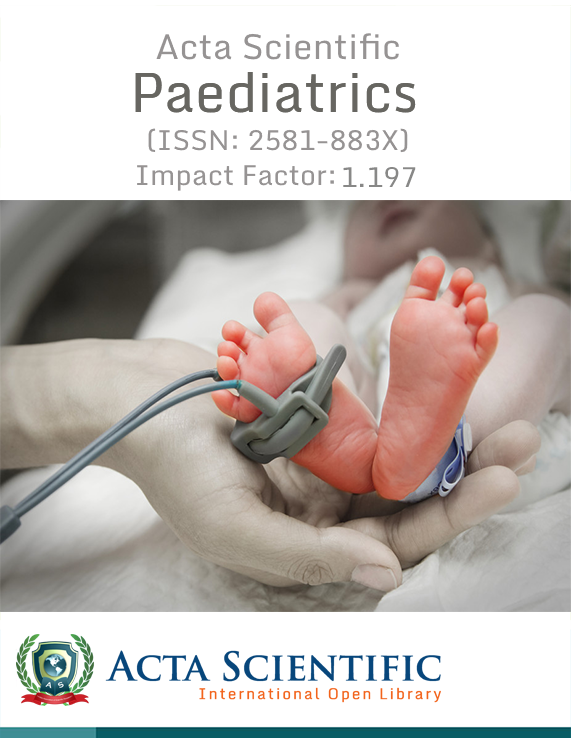Acta Scientific Ophthalmology (ASOP)
Research Article Volume 3 Issue 5
Pallavi Joshi*, Sanjana P and Girish Budhrani
Department of Cornea, Ocular Surface and Refractive Surgery, Sankara Eye Hospital, Bangalore, India
*Corresponding Author: Pallavi Joshi, Department of Cornea, Ocular Surface and Refractive Surgery, Sankara Eye Hospital, Bangalore, India.
Received: March 03, 2020; Published: April 30, 2020
Abstract
Aims: To study the outcome and safety of India ink corneal tattooing for disfigured corneal scars.
Settings and Design: This was a single-centre prospective interventional case series of patients who developed corneal scars with nil visual potential and underwent corneal tattooing from June 2017-September 2018 with a follow-up period of at least 6 months.
Materials and Methods: 15 consecutive cases were enrolled for the study. All patients desired a cosmetic treatment for their corneal scars in blind eye. Complete ophthalmic examination including B scan and photographs of the patients' eyes were obtained. Chemical corneal tattooing was performed using Indian Ink Powder. Patients underwent either inlay, on lay or mixed tattooing and were followed up at the first, third and fifth post-operative day, at 3rd month, 6th month and 1st year post-operatively.
Statistical Analysis Used: Descriptive statistics will be calculated initially. For continuous variables, the mean, standard deviation statistics will be calculated and proportion statistics for categorical data.
Results: Among the 15 cases, 7 (46%) patients underwent intralamellar tattooing, 3(20%) patients had onlay tattoo and 5 (33%) patients underwent onlay with inlay tattoo. Patients who underwent onlay tattoo noted fading of tattoo at the end of 3 months. One year postoperatively, 12 cases (80%) especially the inlay tattoo cases were more satisfied compared to onlay tattoo. All patients were asymptomatic with no evidence of any major ocular complications at the end of one year.
Conclusion: Chemical corneal tattooing is a simple, safe and an efficient technique yielding acceptable cosmetic results. It does not require expensive materials and offers a viable option in comparison to more extensive and invasive reconstructive ocular surgery. Cosmetic contact lenses being unsuitable for majority of cases owing to poor tolerance due to dust exposure and cost effectiveness tattooing of corneal opacities still has a role in cosmetic improvement in cases with unsightly corneal scars. Chemical corneal tattoo by using Indian ink as an alternative proves to give almost equivalent stable, satisfactory cosmetic result with high patient satisfaction in all cases and an improved quality of life.
Keywords: Corneal Opacity; Corneal Tattooing; Inlay Tattoo; India Ink
References
- Dougan C., et al. “Seeing better through someone else’s eyes”. Brown University.
- Verhoe FH. “India ink infiltration: a simple and effective substitute for corneal tattooing”. Journal of the American Medical Association 17 (1917): 1420-1221.
- Burris TE., et al. “Lamellar intrastromal corneal tattoo for treating iris defects (artificial iris)”. Cornea 17 (1998): 169-173.
- Stone NM., et al. “Intractable diplopia: a new indication for corneal tattooing”. British Journal of Ophthalmology 1445 (2008): 561-562.
- Ahn SJ., et al. “A case of superficial corneal tattooing for glare after trabeculectomy”. Canadian Journal of Ophthalmology 44 (2009): e63.
- Vander Velden-Samderubun EM., et al. “Corneal tattooing”. Cornea (1995): 14-225e30.
- Hallock GG. “Cosmetic trauma surgery”. Plastic and Reconstructive Surgery 95 (1995): 380e15.
- Kuzan Jr WM. “Plastic surgery”. Journal of the American College of Surgeons 188 (1999): 171-177.
- Hoeyberhs JL. “Fortnightly review: cosmetic surgery”. British Medical Journal 318 (1999): 512-516.
- Custer PL., et al. “Orbital implants in nucleation surgery. A report by the American Academy of Ophthalmology”. Ophthalmologica 110 (2003): 2054-2061.
- Pitz S., et al. “Corneal tattooing: an alternative treatment for disfiguring corneal scars”. British Journal of Ophthalmology 86 (2002): 397-399.
- GD Kymionis., et al. “Femtosecond-assisted anterior lamellar corneal staining tattooing in a blind eye with leukocoria”. Cornea 2 (2009): 211-213.
- H Alsmman Hassan and NG Abd Elhaliem Soliman. “Intrastromal injection of China painting ink in corneas of male rabbits: clinical and histological study”. Journal of Ophthalmology (2016).
- Gupta D and Broadway D. “Cost-effective tattooing: the use of sterile ink for corneal tattooing after complicated peripheral iridotomies: an alternative to expensive salts”. Journal of Glaucoma 8 (2010): 566-567.
- S Holth. “Revival of Galen’s corneal staining with copper sulfate and tannine should be abandoned”. American Journal of Ophthalmology 14 (1931): 378-379.
- EM van der Velden Samderubun and JHC Kok. “Dermatography as a modern treatment for coloring leukoma cornea”. Cornea4 (1994): 349-353.
- JN Roy. “Tattooing of the cornea 1938”. Canadian Medical Association Journal5 (1938): 436-438.
- Gifford SR and Steinberg A. “Gold and silver impregnation of cornea for cosmetic purposes”. American Journal of Ophthalmology 10 (1927): 240-247.
- MA Amesty., et al. “Tolerance of micronized mineral pigments for intrastromal keratopigmentation: a histopathology and immunopathology experimental study”. Cornea9 (2016): 1199-1205.
- Duggan JN and Nanavati BP. “Tattooing of corneal opacity with gold and platinum chloride”. British Journal of Ophthalmology 20 (1936): 419e25.
- Fogla R., et al. “Microkeratome-assisted corneal tattooing: a case report”. Cornea 29 (2010): 446-448.
- Kim C., et al. “New surgical strategy for corneal tattooing using a femtosecond laser”. Cornea 28 (2009): 80-84.
- Panda A., et al. “Corneal tattooing-experiences with “lamellar pocket procedure”. Indian Journal of Ophthalmology 32 (1984): 408-411.
- C Kim., et al. “Five-year results of corneal tattooing for cosmetic repair in disfigured eyes”. Cornea10 (2011): 1135-1139.
Citation
Citation: Pallavi Joshi., et al. “Outcome of India Ink Corneal Tattooing in Disfigured Corneal Scars”. Acta Scientific Ophthalmology 3.5 (2020): 72-76.
Copyright
Copyright: © 2020 Pallavi Joshi., et al. This is an open-access article distributed under the terms of the Creative Commons Attribution License, which permits unrestricted use, distribution, and reproduction in any medium, provided the original author and source are credited.
Journal Menu
Metrics
News and Events
- Certification for Review
Acta Scientific certifies the Editors/reviewers for their review done towards the assigned articles of the respective journals. - Submission Timeline for Upcoming Issue
The last date for submission of articles for regular Issues is April 30th, 2024. - Publication Certificate
Authors will be issued a "Publication Certificate" as a mark of appreciation for publishing their work. - Best Article of the Issue
The Editors will elect one Best Article after each issue release. The authors of this article will be provided with a certificate of "Best Article of the Issue". - Welcoming Article Submission
Acta Scientific delightfully welcomes active researchers for submission of articles towards the upcoming issue of respective journals.


















 +91 9182824667
+91 9182824667